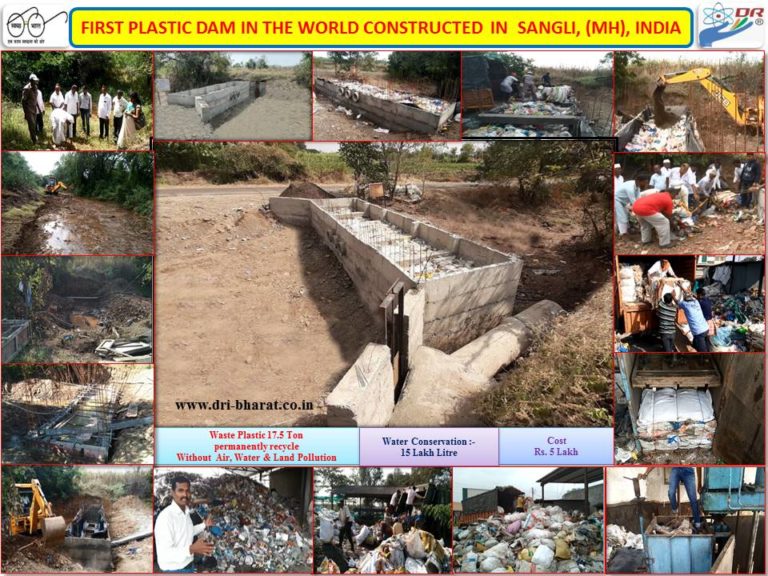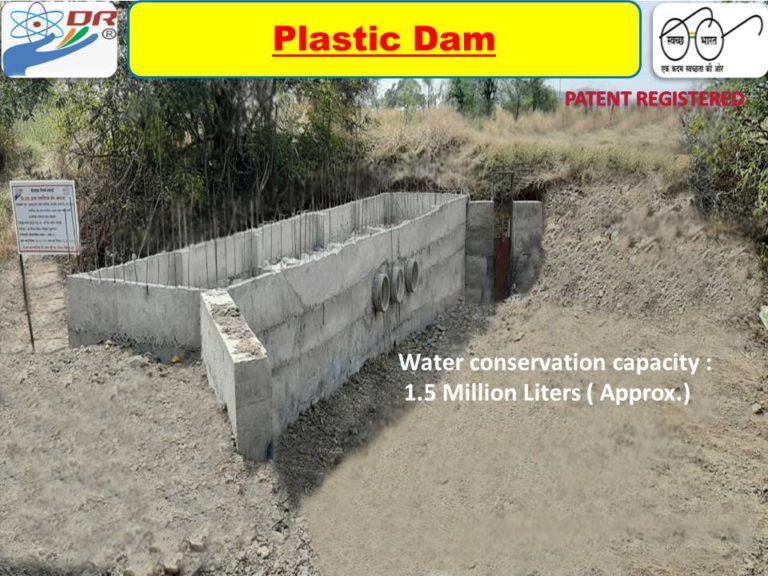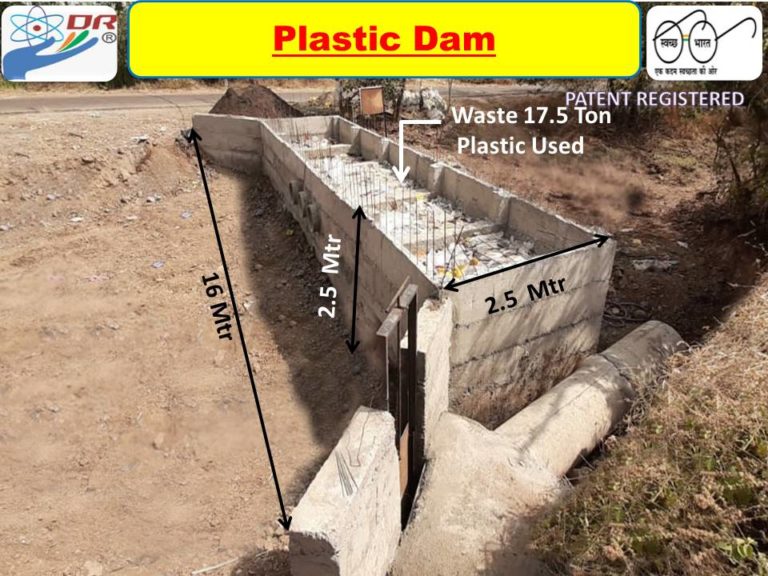Revolutionary “Plastic Dam” Solves Plastic Pollution and Revolutionizes Water Conservation
Introducing the groundbreaking “Plastic Dam” technique, an eco-friendly solution to tackle plastic pollution while conserving water resources without any harmful impact on the environment. By utilizing 17.5 tons of compressed municipal waste plastic, this innovative approach has successfully made 148 villages and two municipal corporations plastic pollution-free zones. Moreover, the Plastic Dam boasts the impressive capability of conserving over 25 lakh liters of water. This pioneering technology sets a global standard, driving progress towards a cleaner, greener world.
First Plastic Dam - Sangli
Keynote Points of Plastic Dam:
– First of its kind in the world, the Plastic Dam tackles plastic pollution in urban areas and water scarcity in rural regions.
– Utilizes 17.5 tons of plastic without causing water, air, or land pollution.
– Affordable construction cost of approx. 7-10 lakh rupees within a month, encouraging public participation.
– Versatile application in small rivers and drains up to 50 feet wide.
– Each dam can benefit around 500 villages, providing relief from plastic pollution.
– Environmentally friendly and patent-registered innovation by Chanakya Bhaskar.
Revolutionizing Water Conservation: The Plastic Dam Solution
1. The Plastic Dam serves as a significant solution for tackling plastic pollution in urban areas, as well as in agriculture and providing clean drinking water in rural regions.
2. This groundbreaking invention addresses crucial aspects of the Swachh Bharat Abhiyan (Clean India Mission) and strongly supports the Plastic Waste-Free World movement.
3. The cost of constructing this innovative dam ranges from approximately 10 to 15 lakhs, and the entire process takes less than a month to complete.
4. Utilizing plastic in the construction of these dams ensures that they remain pollution-free, making it an eco-friendly technique.
5. Plastic dams hold the potential to contribute significantly to water conservation efforts in the future.
6. The relatively affordable construction cost of plastic dams allows for public participation, fostering a people’s movement towards environmental preservation.
7. These dams can be implemented in smaller rivers and drains, with widths of up to 50 feet, making a positive impact on the environment.
8. Each plastic dam has the capacity to provide relief from plastic pollution to approximately 500 villages simultaneously.
9. As the world’s first Plastic Dam, it holds a registered patent, safeguarding its uniqueness and originality.
10. Not involving the burning of plastic and avoiding direct compacting ensures there is no air, water, or land pollution associated with this technology.
World’s First Plastic Dam Constructed in Sangli, Maharashtra: A Groundbreaking Invention by Chanakya Bhaskar, Inventor of PWCP
Revolutionizing Plastic Pollution: The World’s First Plastic Dam in Sangli, Maharashtra
Plastic pollution has become a global challenge, affecting India and the entire world, causing water, land, and air pollution. Chanakya Bhaskar’s research on plastic pollution led to the innovative solution of the Plastic Dam. Riya Deshmukh, CEO of “Deshmukh Research Industry,” is working to bring this research to the public. The research, which began in 2014 and obtained a patent in 2015, has resulted in the construction of the world’s first Plastic Dam in Sangli. These dams effectively utilize 17.5 tons of plastic without polluting water, air, or land, promoting water conservation and combating plastic pollution. The cost-effective construction of the dam, using any type of plastic without the need for segregation, makes it a common solution for both urban and rural areas. Chanakya Bhaskar’s innovations, including “Waste Plastic Product Machines” and “Plastic Dam Techniques,” are also Patent Registered.

Chanakya Bhaskar’s Vision: A Revolutionary Solution to Plastic Pollution and Employment Generation
According to Chanakya Bhaskar, raising the price of waste plastic to Rs. 10 per kg can create over Rs. 5,000 Cr. worth of employment opportunities annually for underprivileged individuals. By utilizing collected plastic in the Plastic Dam without causing pollution, this approach offers a comprehensive solution for water conservation and plastic management. The pressing issue of plastic pollution in water, land, and air necessitates cleaning the entire nation, making India plastic-pollution-free. Chanakya Bhaskar proposes a Clean City Model, wherein a single district is made plastic-pollution-free and then replicated across the country. His research on “Waste Plastic Product Machine (WPPM Technology)” and “Plastic Dam Technique” aims to provide employment opportunities and offer a sustainable alternative to plastic discharge. The technology ensures plastic can be permanently recycled, eliminating pollution without harming the environment. This revolutionary approach is the “Final Step towards Cleanliness,” addressing plastic pollution in a holistic and impactful manner.

Chanakya Bhaskar’s Pioneering Efforts: World’s First Plastic Dam Eliminates Pollution in Aravade Village
Chanakya Bhaskar, recognizing the severity of plastic pollution and the inadequacy of current measures to combat it, took decisive action to address the issue. He emphasized the need for creating employment opportunities while tackling plastic pollution. Choosing Aravade village, he initiated the construction of the world’s first Plastic Dam with the support of Sarpanch Yuvraj Patil and prominent citizens Ramchandra Chavan and Sadashiv Chavan. The construction began on October 25, 2019, and concluded on November 30, 2019, with a total cost of 7 lakh rupees. Funding contributions came from various sources, including Plast India Foundation and Khujgaon village. The Plastic Dam’s capacity exceeds 2.5 million liters and utilized 17.5 tons of plastic from waste depots and villages in the region. The successful completion of the dam has transformed Aravade village into a pollution-free environment, setting a remarkable precedent in the fight against plastic pollution.

